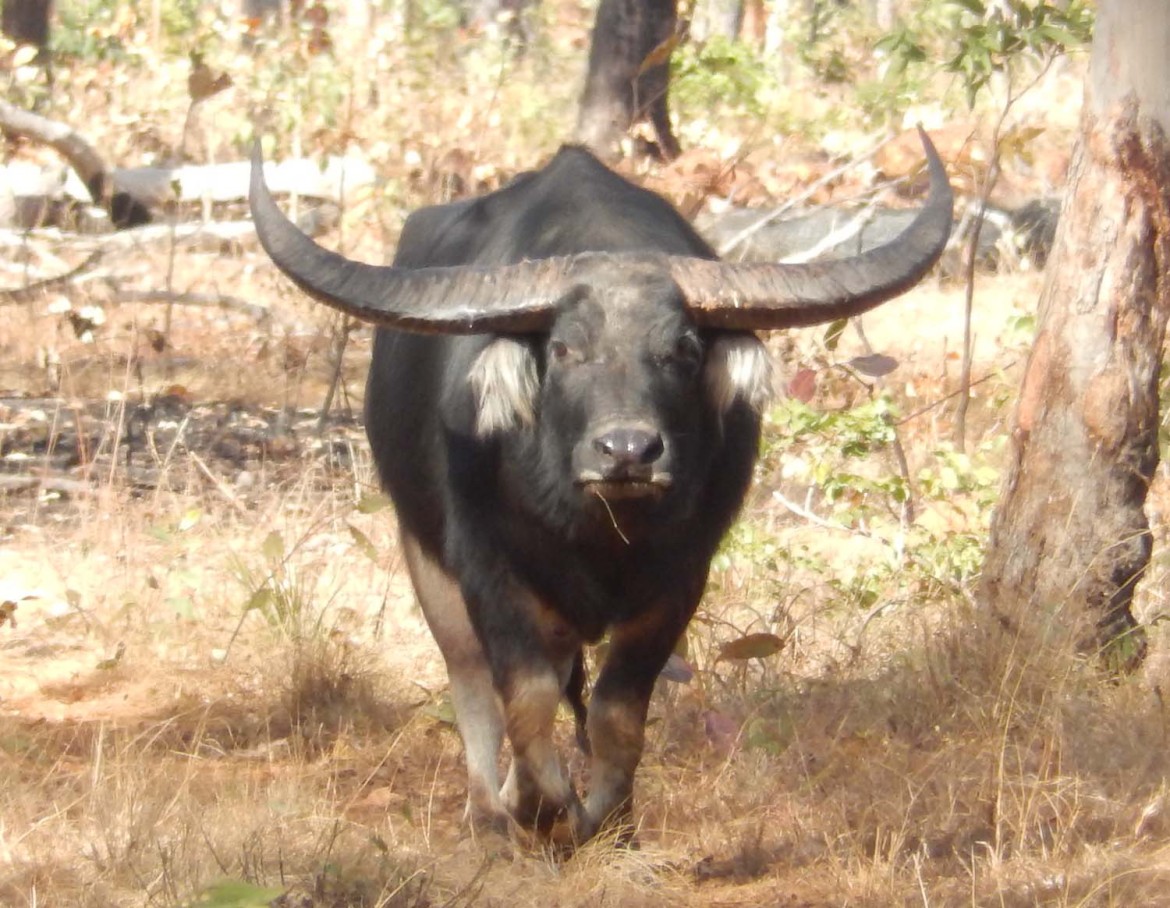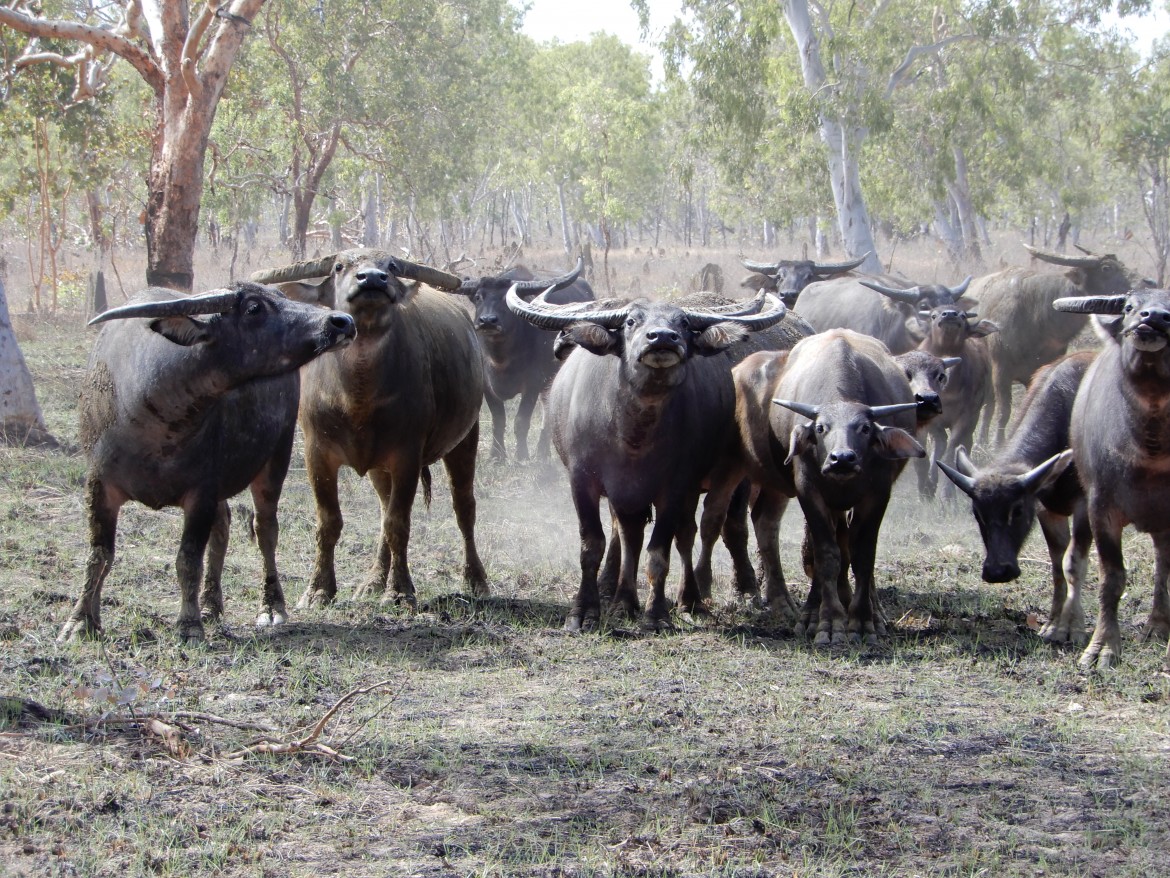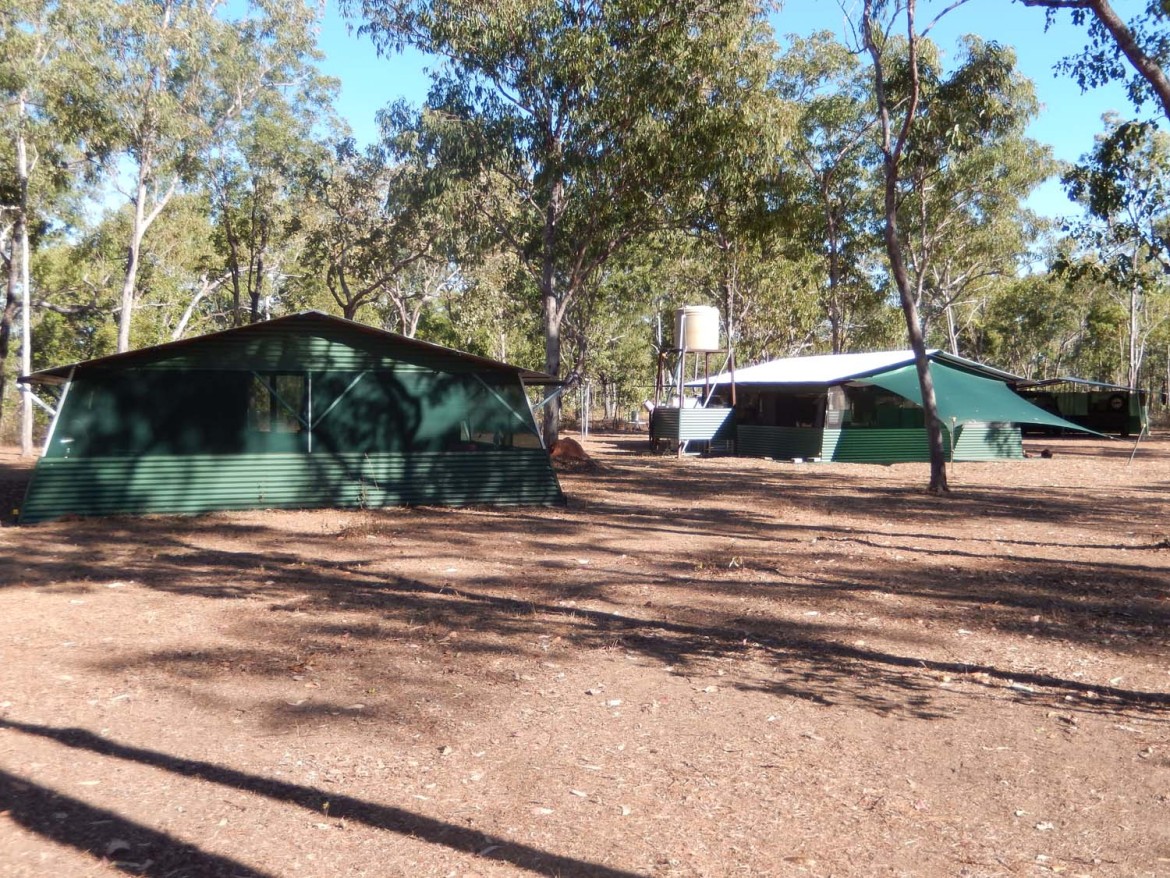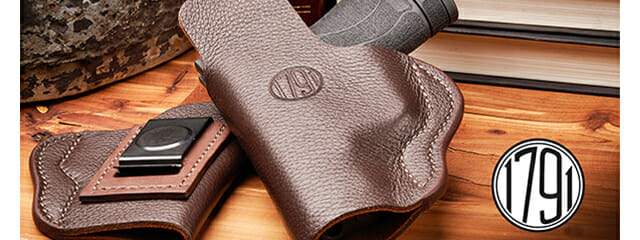Chasing Australian Asiatic Water Buffalo
The huge buffalo stumbled to his feet and was coming fast. The high-caliber bullet had hit him hard, but a little high – a recipe for disaster when pursuing the Asiatic Water Buffalo. As he ruthlessly closed the distance, a second fatal shot would have to be delivered in the next couple of seconds, or things would get really ugly. My heart was pounding out of my chest.
This vivid scenario runs through my brain whenever I think about hunting this huge beast that roams the Northern Territory of Australia. Though this particular scenario hasn’t happened to me, it’s real. Just ask anyone versed in chasing them.
“Yes, they charge! And I can’t stress enough how crucial it is to have an expert guide and make an accurate shot when hunting them,” said veteran buffalo hunter Louis Baum. “If you wound one, they’re going to directly charge the source of that shot – and with a bad attitude.”
The vast, isolated region of the Northern Territory known as Arnhem Land is home to significant numbers of the Asiatic Water Buffalo (Bubalus bubalis). Covering 91,000 square kilometers, this aboriginal-owned expanse also encompasses fish-filled rivers, wild coastlines, lush rainforests, rugged mountains, and woodlands. As one of the last great unspoiled areas on the planet, it’s a sportsman’s paradise. Still, from a hunting perspective, this mammoth species of buffalo is the leading attraction, offering a unique and challenging hunting opportunity.
The Animal
Water buffalo were imported to Australia in the 19th century as a source of food for settlements in the remote north of the country. The buffalo thrived and propagated across the northern region, and they’ve since severely impacted the ecosystem due to overgrazing and damage to wetlands. With no natural predators and variable and high mating opportunities, these creatures are abundant – and with that, so are the hunting opportunities.
This robust animal is typically larger than Cape Buffalo, with males known to tip the scales at over 2000 pounds. Horns of both sexes (larger for males) are heavy set at the base, ribbed, and are triangular in cross-section. The sweeping horns have the widest spread found in any bovid.
Cooperstown, New York resident and long-time hunter, Baum has been on challenging hunts all over the globe. In 2019, he made the trip to the Northern Territory in pursuit of this large, rugged, and wary species of buffalo.
I was fortunate to meet Louis at the 2020 Dallas Safari Club (DSC) expo and learned a lot from him about the animal and his recent experience.
No stranger to hunting adventure, Baum grew up in the foothills of the Adirondack mountains and started developing his outdoor skills at a young age. His abilities as a sportsman were honed not only during early hunting trips but at summer camps where he learned woodsmanship and conservation.
“I was lucky that, as a youngster, I was exposed to many valuable aspects of hunting and the outdoors,” Baum said. “My experience in and around the Adirondack Mountains taught me important skills, such as hunting camp tasks, navigation, parallel still hunting, and ultimately shooting. It also taught me the importance of conservation and the common bond between hunters.”
It’s no surprise that Baum would eventually gain a desire to hunt new areas and big game animals. And that he did, subsequently chasing and harvesting a variety of game in Saskatchewan, Newfoundland, Russia, and Africa. Baum would go on to contact Peter Lorman of Tropical Hunting Safaris to guide him in pursuit of the Asiatic Water Buffalo in Australia. When it was all said in done, the adventure would rank as one of the top hunting experiences for the accomplished sportsman.
“The whole experience was really gratifying for me,” Baum said. “It required a lot of research and preparation. The people at Safari Club International kept saying, call Peter [Lorman]. I’m glad I did. His knowledge, hospitality, and attention to detail truly made this a hunt of a lifetime.”
Several details have to be checked off before you ever arrive in northern Australia. Along with practicing shooting and loading your firearm of choice, you must research best-practices and laws for traveling with firearms and ammunition, as well as file accurate and necessary customs and passport information.
“There are many travel details to consider for a trip like this. If mistakes are made, the whole trip can be wrecked,” Baum said. “Of course, once there, shot placement is important with these animals, and they may charge you. It’s important to get very familiar with your weapon at home. You also want to be swift with loading and reloading.”
Baum depended on Peter and Tropical Hunting Safaris to ensure no detail was overlooked.
“Peter is very knowledgeable about all the details from start to finish and gladly helps. He was available along the way for help, if needed. Peter and his staff get it done before and during the hunt,” Baum said.
Once you arrive in Australia, you can expect about a 10-hour drive from Darwin to the Tropical Hunting Safaris camp in the Northern Territory. When you finally arrive, it’s game on. In such a wild and secluded environment, it’s important to align yourself with capable hosts.
“When we arrived, we found a camp leaving us wanting for nothing: comfortable lodging, ample water, kitchen, and satellite television. And the food – Peter is a great cook. The camp even has dependable satellite telephone service – it’s reassuring,” Baum said.
The expertise of the guides, paired with their local roots, gave Baum the peace-of-mind he needed to focus on the adventure of the hunt.
“Peter and his guides are experienced hunters that are good at what they do. It’s a safe and fun experience. Plus, they are native Australians and have a good relationship with the Australian Council. All the bases are covered,” he said.
The Hunt
Hunting the scenic floodplains and rolling terrain, you’re treated to not only the game animals themselves, but breathtaking scenery and diverse ecosystems teaming with natural vegetation and wildlife. Hunts are almost exclusively spot-and-stalk. Though manageable, it can be laborious.
“A typical day entailed covering 15 kilometers, and that includes your gear. It was crucial to stay hydrated,” Baum said.
The Asiatic Water Buffalo must water at least every other day, and stalking around the many “soaks” (springs) is common. With persistence, you can find groups of buffalo watering. It’s not easy, though, as these animals are wary and can sense you if the wind is wrong.
“They have no predators there, so unlike some other animals, you can find them in groups. But the bigger and older bulls are much more solitary. And if they wind you, they’re gone,” Baum said.
The Gun
Considering their massive size, strong heart, and thick hide, shooting Asiatic Water Buffalo requires stout rifle calibers and loads. Bullet placement is paramount to ensure quick kills and avoid danger. An excellent strategy is to break both of the buffalo’s shoulders. In this scenario, it can’t escape or charge with both shoulders broken, and a finishing shot can be delivered safely and humanely. Like most big game species, lung shots are also a great option, and the heart/lung area of this species presents a large target.
Ideal bullets include 250 grain in .338 caliber, 286 grain in 9.3mm, 300 grain in .375 caliber, 400 grain in .416 caliber, and 450-500 grains in .458 caliber. One particularly popular choice of weapon are British double rifles that can be quickly loaded and reloaded.
A knowledgeable gun enthusiast, Baum could hardly wait to put his Gibbs 450-400 3 1/4-inch double rifle (circa 1902) to the test. Opting to use express sights, his shots were from 25-85 yards. He chose Woodleigh’s Hydrostatic Bullets, known for creating a massive hydrostatic shock wave to dispatch game humanely.
“I love British double rifles, and for me to take Asiatic Water Buffalo with one was the pinnacle for me,” Baum said.
He continued, “My Gibbs 450-400 31/4” (with express sights) shot well with these bullets with no regulation or point of impact issues. The results on the Buffalo were excellent. Most of them were taken with one shot – I highly recommend this bullet.”
The Overall Experience
After days of treacherous hard-stalking, Baum had taken three buffalo, with one being a trophy-class bull sporting sweeping horns of 100 inches. Not a bad trip.
“It was such a great feeling. After all of my preparation, it was so gratifying,” Baum said. “I was able to have success hunting a new area and animal – all with my British double rifle. It all came full-circle.”
In addition to harvesting animals, there is so much to enjoy about the wilds of northern Australia: the majestic lands, native animals, and camaraderie of the hunt.
“I learned so much in the Northern Territory, and it was truly a unique experience. The clear blue skies, a large quantity of game and other animals, as well as meeting interesting new people. I not only took some great animals but found a great outfitter and life-long friend in Peter,” Baum said.
The final step of the cautious stalk has been made, and the distance has been closed to a mere 50 yards. I can only imagine the feel of adrenaline while wondering if the shot adequately met its mark. Then, regardless of the number of shots it took to take the beast down, the emotions from harvesting a formidable, massive, and dangerous game animal wash over me. It’s no surprise that Baum plans on returning to hunt with Peter at Tropical Hunting Safaris in the near future.
Based in Texas, Jerald Kopp is President of 1st Light Hunting Journal. His articles cover a variety of topics about hunting and the outdoor lifestyle. Jerald is an avid outdoorsman with deer hunting and whitetails being by far his greatest passion. He was introduced to hunting and fishing at an early age and has been enjoying it for 40+ years. In 2005, he established the Empowerment Outfitter Network (EON) – a faith-based non-profit organization that provides hunting opportunities for disabled and terminally-ill children and youth. When not hunting, he spends his time traveling and enjoying life with Amy, his wife of over 30 years. Jerald and Amy have two adult daughters and a son-in-law.









